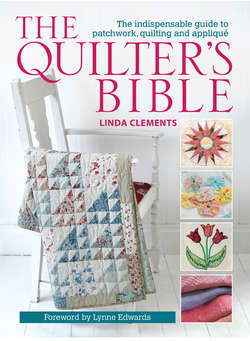Читать книгу The Quilter's Bible - Linda - Страница 40
На сайте Литреса книга снята с продажи.
Sewing Machine Basics
ОглавлениеAdvice on using a sewing machine for patchwork, quilting and appliqué is given throughout the book, especially in Machine Piecing and Machine Quilting.
Stitch length – This is the length in millimetres of each stitch that makes up the pattern. For machine quilting most people use a stitch length of about 10–12 stitches per inch (2.5cm) but this may be varied depending on fabric and threads being used. The thicker the fabric, the longer the stitch required.
Machine tension – This is the tightness the stitches are formed under and can affect how the work looks from the front and back. The upper and lower tensions should balance, so thread used in the bobbin should not show on the top of the work, and vice versa. The bottom bobbin thread tension is controlled by a screw on the bobbin case, which can be loosened or tightened. The top tension is controlled on most machines by a dial, the position of which will vary. If the bobbin thread is showing through on the top of the work, the tension is too tight, so loosen it by selecting a lower number. If the top thread is showing through on the back of the work and even creating loops, the tension is too loose, so tighten it by selecting a higher number.
Machine tools – There are some accessories that make sewing easier, including a walking foot or even-feed foot for machine-guided quilting, a 1⁄4in (6mm) foot for 1⁄4in (6mm) line spacing, a darning foot for free-motion quilting, a dual-feed foot to help ensure even stitching and a quilting guide to stitch parallel rows of stitching. See Machine Quilting Tools for more information.
